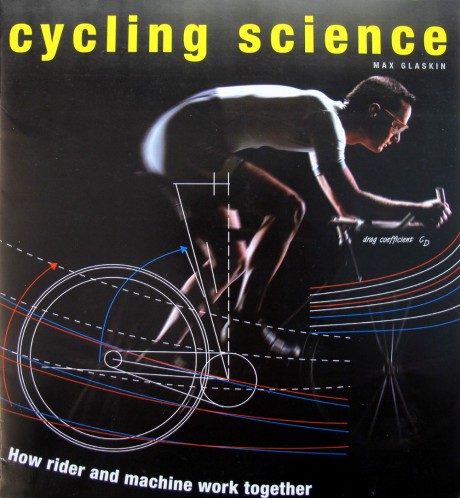 Cycling Science: How Rider and Machine Work Together by Max Glaskin is a new book from the University of Chicago Press that will be released in November. I don’t have a copy of the entire book, just a 10 page preview sampler from the publisher, but from what I can see it looks like it might interest many of you who regularly read this blog. As you might gather from the subtitle, Glaskin discusses the science of cycling as it pertains to both the bike and the rider. Unlike the classic books Bicycling Science by David Gordon Wilson, and Science of Cycling and High-Tech Cycling by the late Dr. Edmund Burke, which delve deeply into the science and engineering of bicycles and cycling, Glaskin’s books seems to be written for a more general enthusiast audience. That is not to say that it is not informative… just that you don’t need a degree in Mechanical Engineering or a PhD in Exercise Physiology to understand it. Glaskin does provide explanatory charts and graphs to illustrate his points, but if you are looking for page after page of equations and data (like Bicycling Science or even Bicycles and Tricycles), this may not be the book for you (again, based on just a few pages). If you want basic explanations of topics ranging “from tire rolling resistance, the difference between yield strength and ultimate strength, to the importance of drag and the impact that shaved legs have on speed,” this book will definitely interest you.
Cycling Science: How Rider and Machine Work Together by Max Glaskin is a new book from the University of Chicago Press that will be released in November. I don’t have a copy of the entire book, just a 10 page preview sampler from the publisher, but from what I can see it looks like it might interest many of you who regularly read this blog. As you might gather from the subtitle, Glaskin discusses the science of cycling as it pertains to both the bike and the rider. Unlike the classic books Bicycling Science by David Gordon Wilson, and Science of Cycling and High-Tech Cycling by the late Dr. Edmund Burke, which delve deeply into the science and engineering of bicycles and cycling, Glaskin’s books seems to be written for a more general enthusiast audience. That is not to say that it is not informative… just that you don’t need a degree in Mechanical Engineering or a PhD in Exercise Physiology to understand it. Glaskin does provide explanatory charts and graphs to illustrate his points, but if you are looking for page after page of equations and data (like Bicycling Science or even Bicycles and Tricycles), this may not be the book for you (again, based on just a few pages). If you want basic explanations of topics ranging “from tire rolling resistance, the difference between yield strength and ultimate strength, to the importance of drag and the impact that shaved legs have on speed,” this book will definitely interest you.
The sampler booklet that I received included sections about gearing, aerodynamic drag, wheel design, and power output…and you can see photos of those pages below. These are just a small representation of the 192 pages in the full book, but based on what I have seen so far, I am looking forward to reading it when it becomes available.
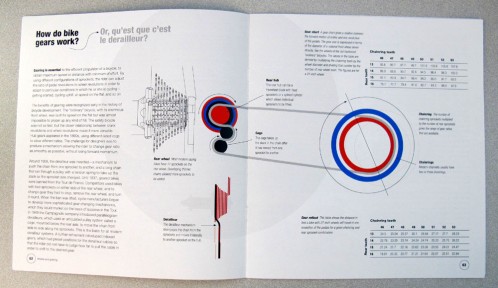
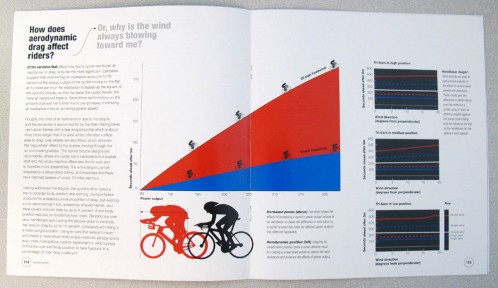
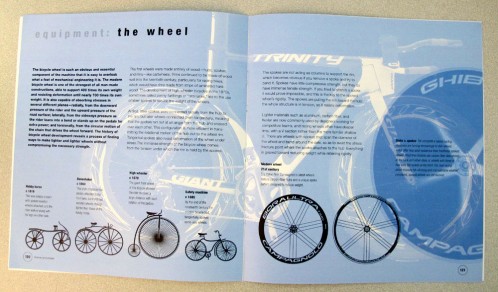
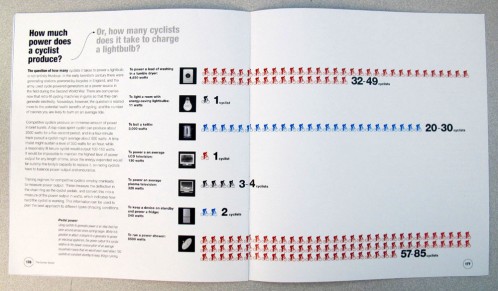

Leave a Reply